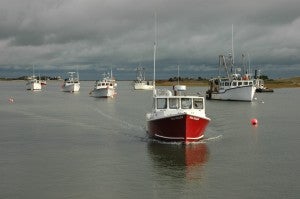In yesterday’s New York Times, Oceana’s Gib Brogan raised serious concerns in an Opinion piece, “A Knockout Blow for American Fish Stocks,” about both the future facing New England cod and the New England Management Council’s stewardship of the region’s fisheries resource. We share many of Gib’s concerns.
Fisheries management is too often presented as a choice between protecting the environment, on the one hand, and the economic interests of fishermen and coastal communities on the other. But we know from our experience in United States that the two are inextricably linked. With many fisheries around the country rebounding, fishermen are among the primary beneficiaries as catch limits increase. Conversely in New England, the collapse of cod presents a significant challenge to coastal fishing businesses; and the recent initiatives of the council on habitat and monitoring are dangerous precisely because they further jeopardize the fishery’s long-term prospects.
Having an effective network of closed areas is essential to protect vulnerable habitats, increase productivity of fish stocks, and guard against the growing uncertainty about our oceans’ future due to climate change. But in their recent deliberations on the so-called Omnibus Habitat Amendment, the council took an alarmingly short-term perspective. Under the council plan, sea floor habitat known to be critical for juvenile cod on Georges Bank, untouched for two decades, will be opened to scallop dredging. Important protections for species that are in decline, including cod and yellowtail flounder, will be undone. And protections for species that are doing well, such as haddock and lobster, will be removed without any additional safeguards of equivalent value being provided. As one dissenting Council member pointed out, throwing open areas that have been closed for 21 years is a dangerous step, and could deprive future generations of a viable groundfish fishery.
Similarly, the Council’s vote to simply stop paying for monitors to accompany New England commercial fishing boats should be gravely concerning for everyone who wants a brighter future for the region’s fishing communities. Generating better data on what fish are being caught, how much is being caught, and what is being discarded and tossed back into the ocean is a recipe for long-term success in any fishery. But just 20 percent of New England groundfish boats are currently monitored – a level of coverage too low to provide scientists and managers with a complete picture of the fishery. Rather than respond to the current crisis by increasing coverage – a viable option thanks to cost-effective electronic monitoring alternatives – the council has voted to eliminate a vital data
stream, which is certain to lead to weaker science and less effective management.
This is too bad since experience and science show that fisheries can have a dramatically better future. EDF along with other leading institutions recently examined what’s possible for global fisheries when effective management and science are deployed. This research, the Ocean Prosperity Roadmap referred to by Gib, demonstrates that if sustainably managed, the oceans have tremendous potential to produce more food and profits, while keeping more fish in the water for healthy ecosystems. Preliminary results show that within 10 years of implementing sustainable fishing policies, global annual profits could increase by 51 billion USD (or 115 percent), and that by 2050 harvests could rise by 12 million metric tons (or 14 percent) while the amount of fish in the water would be 36 percent higher than today.
The research suggests that these gains can be achieved when fishermen have secure, long-term rights that allow them to benefit financially as fish populations rebuild. The elements Gib suggests – habitat protection, quotas based on good science and catch monitoring – are vital as well but must be coupled with the important stewardship incentive that fishing rights unlock.
The bottom line in New England groundfish is this: the future may not look like the past, and therefore we need to be realistic about where fish will be in the future. Good science and adaptive management can help manage for these changes.











